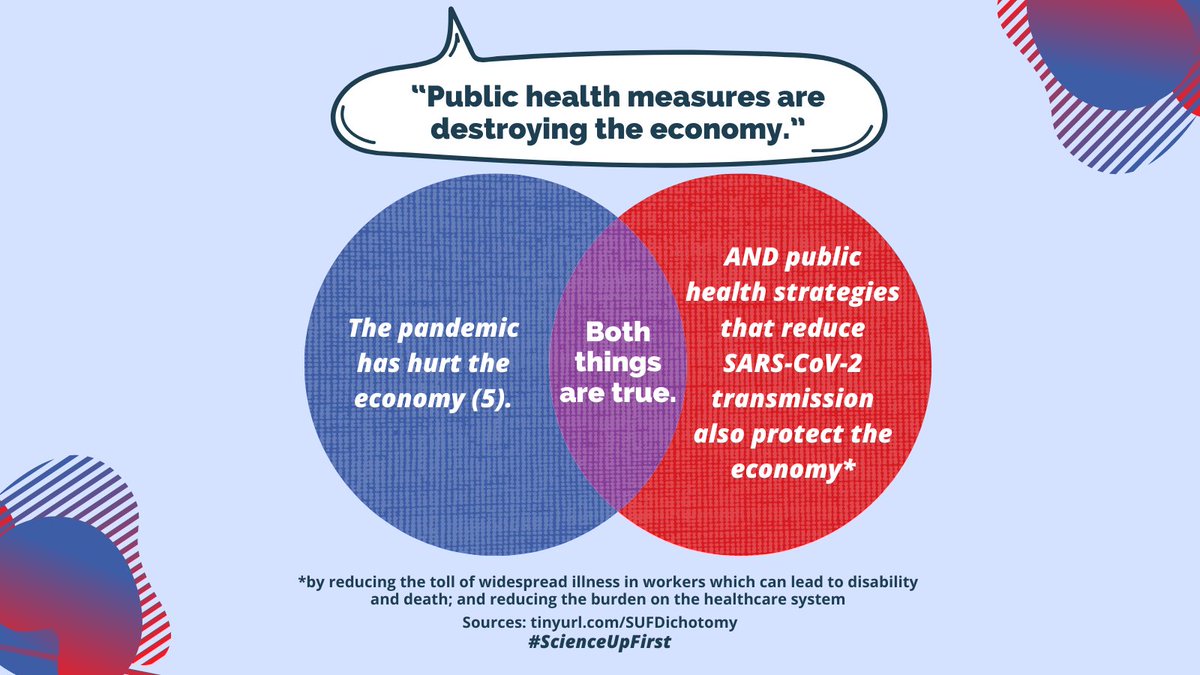
COVID isn’t over. We know that’s not what anyone wants to hear right now, but it’s true. 🤷🏽♂️
So what is endemicity, and what will it take for us to get there?
Read on to learn more 👇
#ScienceUpFirst
🧵 [1/12]
So what is endemicity, and what will it take for us to get there?
Read on to learn more 👇
#ScienceUpFirst
🧵 [1/12]

What is an endemic disease? 🤔
A single definition of “endemic” is tough to pin down (1). But epidemiologists say it’s when the rates of a disease are constant - not rising and not falling (2).
#ScienceUpFirst
🧵 [2/12]
A single definition of “endemic” is tough to pin down (1). But epidemiologists say it’s when the rates of a disease are constant - not rising and not falling (2).
#ScienceUpFirst
🧵 [2/12]
So, are we there yet with COVID-19? 📍
No we are not. COVID-19 remains unpredictable (3) and new variants will make it even more so (4).
#ScienceUpFirst
🧵 [3/12]
No we are not. COVID-19 remains unpredictable (3) and new variants will make it even more so (4).
#ScienceUpFirst
🧵 [3/12]
Endemic ≠ mild 🤒
The common cold is endemic, but so is malaria. There were 241 million cases and 627,000 malaria deaths worldwide in 2020 (5).
#ScienceUpFirst
🧵 [4/12]
The common cold is endemic, but so is malaria. There were 241 million cases and 627,000 malaria deaths worldwide in 2020 (5).
#ScienceUpFirst
🧵 [4/12]
During endemics it’s also possible to have outbreaks. Pertussis (whooping cough) is endemic, with frequent outbreaks (6).
So saying a disease “will become endemic” doesn’t really tell you much. COVID-19 remains complex and potentially deadly (7).
#ScienceUpFirst
🧵 [5/12]
So saying a disease “will become endemic” doesn’t really tell you much. COVID-19 remains complex and potentially deadly (7).
#ScienceUpFirst
🧵 [5/12]
New variants are likely, and may not play nice. 💥🤛
Viruses don’t always evolve to become milder (8). The Delta variant was more severe than the OG strain (9). To be endemic, we must prevent new variants by limiting the chance of viral replication.
#ScienceUpFirst
🧵 [6/12]
Viruses don’t always evolve to become milder (8). The Delta variant was more severe than the OG strain (9). To be endemic, we must prevent new variants by limiting the chance of viral replication.
#ScienceUpFirst
🧵 [6/12]
Unless vaccines are everywhere, the COVID-19 pandemic isn’t going anywhere.
Variants are most likely to arise with high transmission rates. The best defense is to reduce spread of the virus (2), with NPIs (e.g. masks) and vaccines for all (10). 💉
#ScienceUpFirst
🧵 [7/12]
Variants are most likely to arise with high transmission rates. The best defense is to reduce spread of the virus (2), with NPIs (e.g. masks) and vaccines for all (10). 💉
#ScienceUpFirst
🧵 [7/12]
For immunocompromised people, this pandemic isn’t over at all.
14% of Canadians live with a compromised immune system (11) + are more likely to get very sick from COVID-19 (12). Even if fully vaccinated, they may not be sufficiently protected (13).
#ScienceUpFirst
🧵 [8/12]
14% of Canadians live with a compromised immune system (11) + are more likely to get very sick from COVID-19 (12). Even if fully vaccinated, they may not be sufficiently protected (13).
#ScienceUpFirst
🧵 [8/12]
Structural changes like better ventilation, flexible work and school, and masking policies for essential services would help create more equity for the over 5 million Canadians with compromised immune systems and society at large (4). ❤️
#ScienceUpFirst
🧵 [9/12]
#ScienceUpFirst
🧵 [9/12]
We have the power to shape what the endemic will look like. 🤝
“Living with the virus” shouldn’t mean abandoning layers of protection. It should mean using what we’ve learned about COVID-19 + the tools we have globally to make it more manageable.
#ScienceUpFirst
🧵 [10/12]
“Living with the virus” shouldn’t mean abandoning layers of protection. It should mean using what we’ve learned about COVID-19 + the tools we have globally to make it more manageable.
#ScienceUpFirst
🧵 [10/12]
COVID-19 is not endemic yet, and we understand that is disappointing.
But pretending the pandemic is over won’t make it so — it will make it worse. 🙅🏼
#ScienceUpFirst
🧵 [11/12]
But pretending the pandemic is over won’t make it so — it will make it worse. 🙅🏼
#ScienceUpFirst
🧵 [11/12]
Remember: endemic doesn’t mean harmless, we can reach it more safely by learning from our experience with COVID-19 so far.
Questions? Leave us a comment or send us a DM! 🙋🏿♀️
References: tinyurl.com/SUFEndemic
#ScienceUpFirst
🧵 [12/12]
Questions? Leave us a comment or send us a DM! 🙋🏿♀️
References: tinyurl.com/SUFEndemic
#ScienceUpFirst
🧵 [12/12]

• • •
Missing some Tweet in this thread? You can try to
force a refresh












